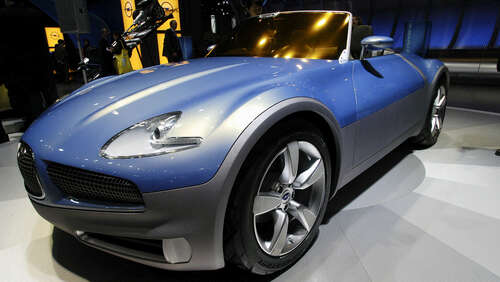
At a time when hybrid technology was in its infancy, the B9 Scrambler was extremely innovative. It offered both a 134-horsepower electric motor and a 2.0-liter 138-horsepower flat-four combustion engine that worked in tandem and kept the car more eco-friendly. In what Subaru called a “Sequential Series Hybrid Electric Vehicle (SSHEV),” the electric motor powered the car from 0–50 mph, meaning that when tooling around town, you wouldn’t be wasting gas.
But once you got out on the highway and got past 50 mph, the gas engine would kick in seamlessly through the use of a transmission with a two-way clutch. The gas engine would also kick in if you needed to accelerate quickly, whether you were speeding up to get on the highway or driving up steep hills.
This early hybrid technology both consumed less gas and provided for lower exhaust emissions than most other cars. In an effort to conserve energy, the gas engine would also act as a charger for the car’s batteries. At a time when fears were beginning to emerge about climate change, this hybrid concept was exceedingly forward-thinking and certainly informed many of Subaru’s future hybrids.
[Featured image by 160SX via Wikimedia Commons | Cropped and scaled | CC BY-SA 3.0]

